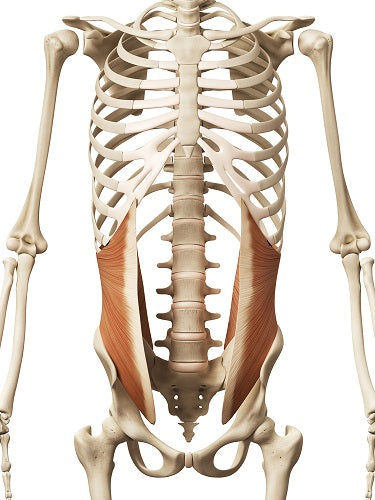
Muscle Anatomy
internal oblique
The internal oblique muscles are located in the lateral and anterior abdominal wall, forming part of the muscles that contribute to the core. They are broad, flat muscles with fibers running at an oblique angle.
Origin:
Originating from the thoracolumbar fascia, the iliac crest, and the inguinal ligament, the internal oblique takes its starting point from the bony and ligamentous structures surrounding the abdomen.
Insertion:
The muscle inserts into the inferior borders of the lower three or four ribs, the linea alba, and the pubic crest. Additionally, it has some fibers that blend with the aponeurosis of the rectus abdominis. This insertion site establishes connections with the ribs, linea alba, and pelvic region.
Function:
Functionally, the internal oblique plays a crucial role in the movements of the trunk and contributes to core stability. Bilateral contraction of these muscles results in flexion of the trunk, bringing the chest closer to the pelvis. Unilateral contraction facilitates lateral flexion and rotation of the trunk. Additionally, the internal oblique is involved in forced expiration, as it compresses the abdominal contents, increasing intra-abdominal pressure. During activities such as bending, twisting, or maintaining an upright posture, the internal oblique works synergistically with other abdominal muscles to provide support, stability, and contribute to complex movements of the torso.
